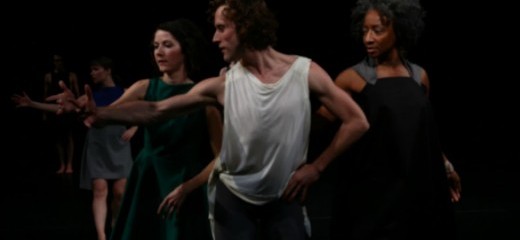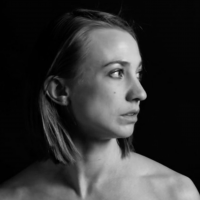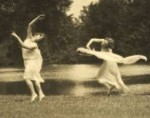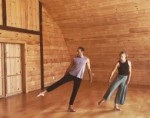
Masterful Movements
by Ellie Goudie-Averil
“This work is sparked by my immersion in the poetics of dance and the information I have gleaned from 30 years of wrestling with its indeterminate qualities."-Tere O'Connor in his Choreographer's Note
Tere O'Connor has been making dances with his company since 1982, the year I was born. In those years, he has become a master of the craft. With Bleed, premiering last weekend at the Brooklyn Academy of Music's Fisher Theater, he may just have created a masterpiece.
Bleed, the culminating piece in a two year project and a synthesis of three previous works (Secret Mary, poem and Sister), is a work of art that demands attention to what IS--what is right there within the black box on the marley, at the end of the year 2013--not what it suggests or might be trying to say. Every moment unfolds with an acceptance that it was meant to be. The movement phrases do not so much draw from source material as emerge from a place of an unbiased awareness of dance history. This is a dance that knows where it comes from, if not why. This is dance you can trust. It exists not to shock or even entertain, but to simply be what it is within space and time.
The piece begins with a solo for a single dancer in a well-tailored kelly green dress. Heather Olson's command of her body is such that she is able to make space for the viewer to fully see (open up to/open into) her opening solo. She dances with precision, moving with superb detail from staccato minuet into a pedestrian brush of her hands on the fabric of her dress, into balletic jumps, approaching the audience and skimming across the stage with easeful force.
Following this opening poem as dance, the body of the piece can be seen as a cultural ritual, and unfolds within an unquestionably liminal space. Five male dancers enter in arabesque, almost like the entrance of one of Petipa's corps of sylphs and surround Olson, repeatedly lifting her up and dropping her deftly. The men then cavort in a ballet of spiraling turns, hippy swivels and triplets. I smell their hair as they waft past. Five other dancers enter and a Renaissance of mingling becomes an intricate circular traveling pattern, which pauses only in tableaus of tenderness: one dancer stops with hands on another's face; two dancers pause in passing, looking back like fauns.
At two moments within the hour-long dance, all eleven of the dancers shout "HA" heavenward and as the lighting (brilliantly designed by Michael O'Connor) shifts, they chug forward in unison and a lithe Adonis of a man lies on a white rectangular slab of light like Juliet waiting to be discovered by an army of Romeos. Strong imagistic moments like this one are interspersed with duets, trios and group dances that emerge with a vast and eclectic vocabulary, all supported by the similarly variant sound design, by James Baker. At one point, the two African Americans in the cast came forward for a fast-paced duet comprised of distinctly Africanist movement vocabulary. Somehow, within the mash-up of wide-ranging movement material, this came across as distinct, but not any more politically incorrect than the white dancers performing balletic steps. Throughout the work, diversity, humanity and connection remain at the fore.
Tere O'Connor has been strongly connected to Philadelphia since the ‘90s. Most recently his Rammed Earth premiered at the Live Arts Festival and he collaborated in a two-year long process with Headlong. I can only hope his Philly connection continues into the future, because it is dance like this that makes a visceral case for the dancing body as a vessel of meaning. It is dance like this that makes the kinesthetic joy of moving truly palpable to the viewer.
Bleed, Tere O'Connor Dance, December 11-14, BAM Fisher
By Eleanor Goudie-Averill
December 18, 2013









